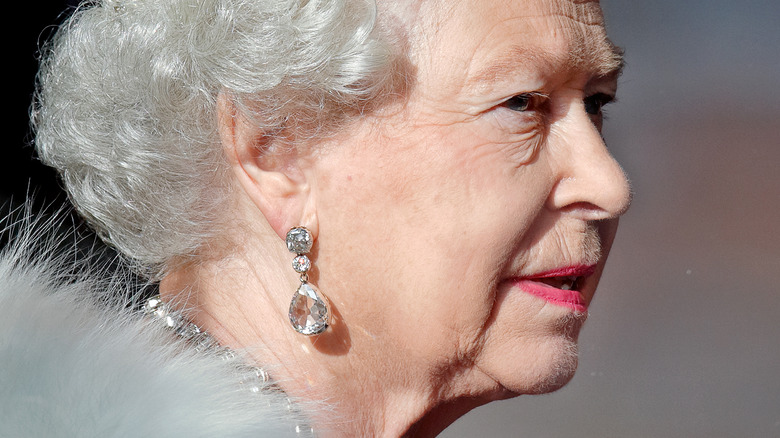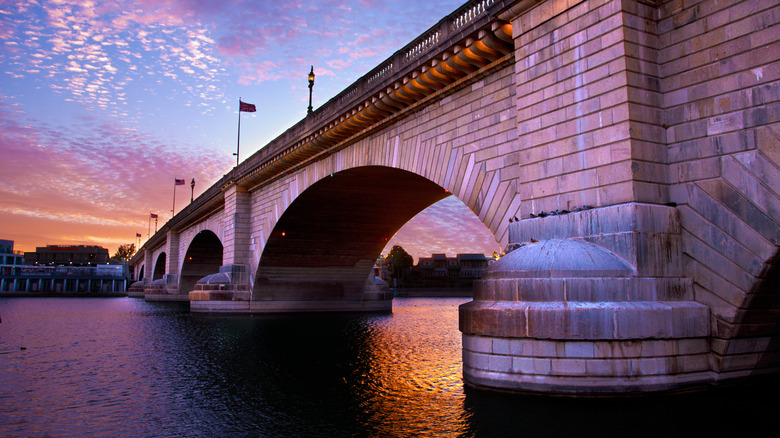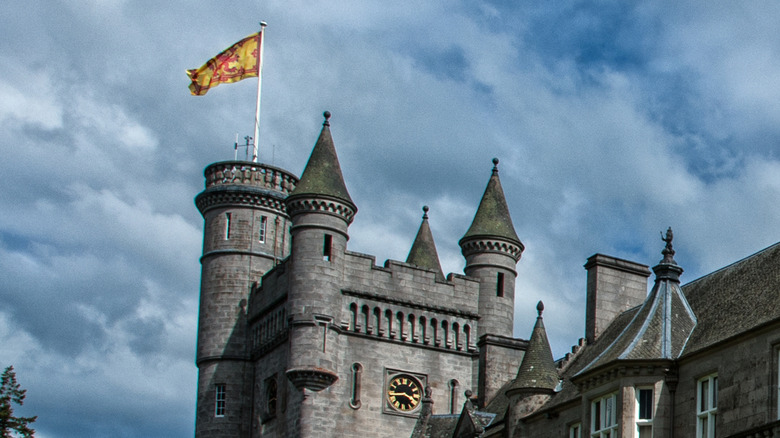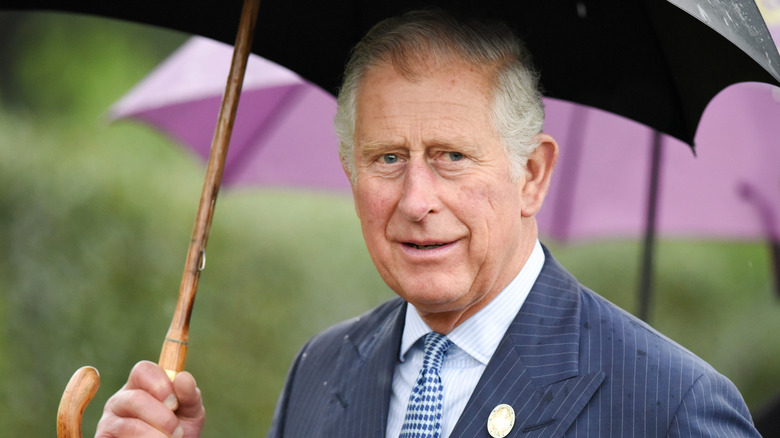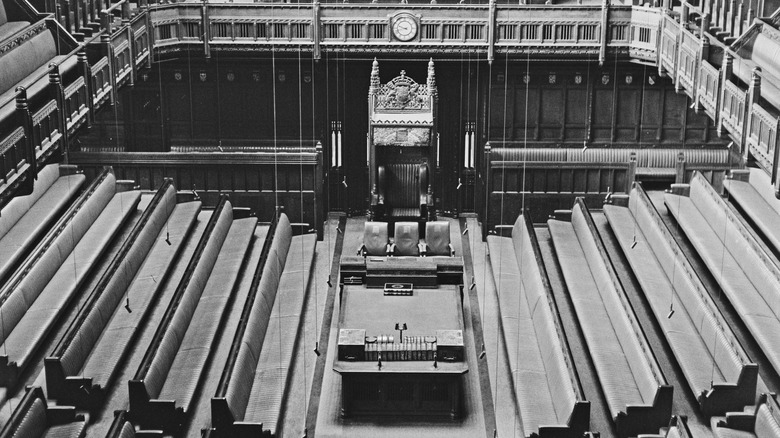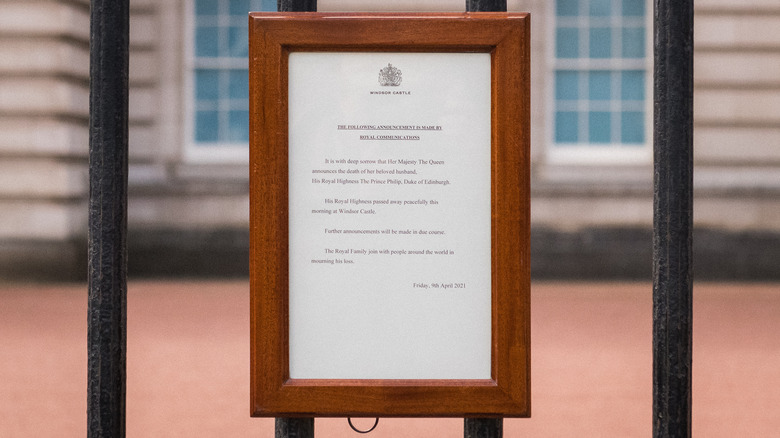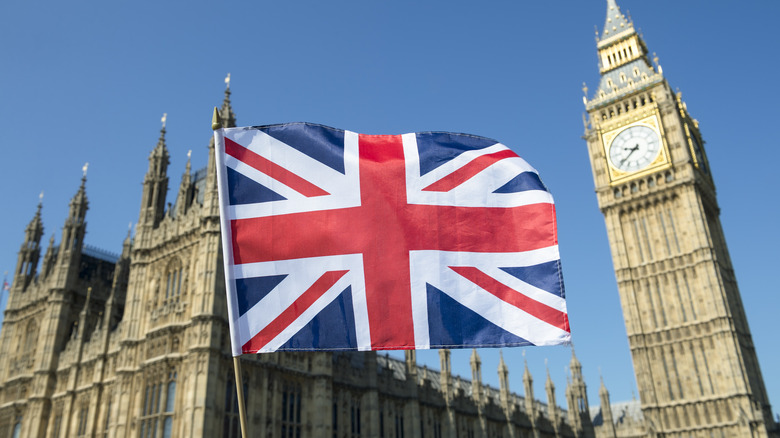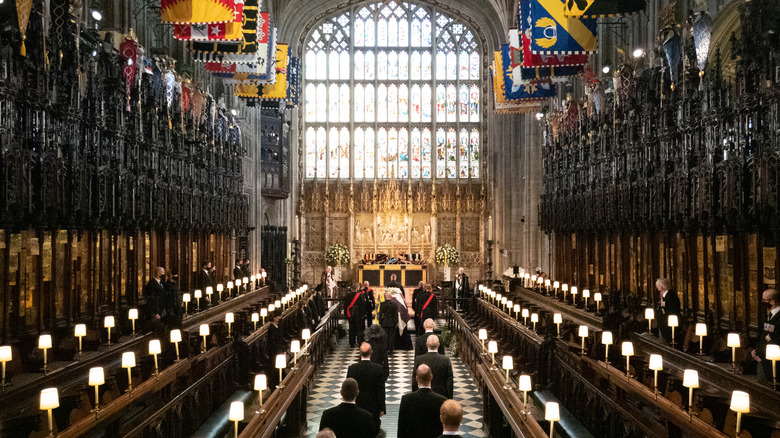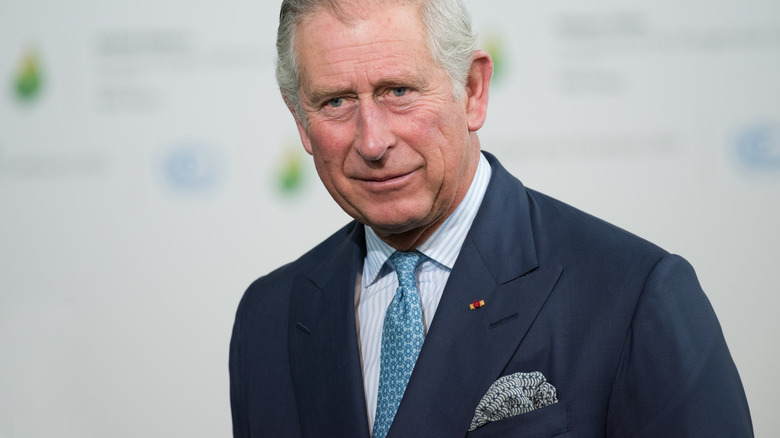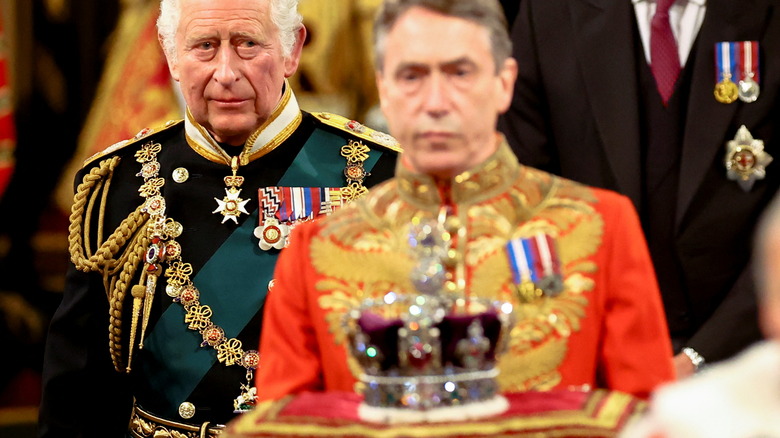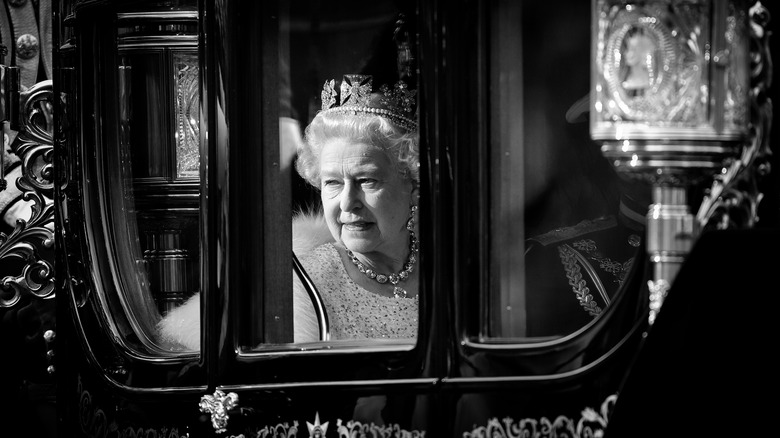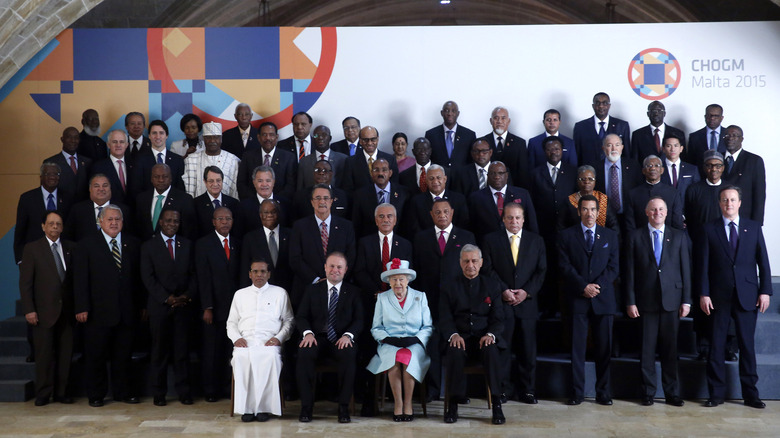What Will Happen After Queen Elizabeth II Dies?
The majority of the people reading this article have likely lived through the presidencies of at least eight presidents of the United States and probably two or three popes. However, except for the readers at the older end of the bell curve, most have been alive during the reign of one and only one British monarch: Queen Elizabeth II. She has reigned since 1952 and, according to Tatler, is the longest-reigning current monarch in the world. However, at 96, the queen likely doesn't have much time left, and soon the British public and government, as well as those of her realms across the world, will have to deal with not only the death of their beloved royal but also with the transition from the modern Elizabethan monarchy to that of her successor (likely her son, Prince Charles).
When Queen Elizabeth does die, it will set into motion a series of events that will include the immediate ascension of her successor, followed by a period of mourning and a state funeral, and will culminate in the coronation of the next monarch.
D-Day and Operation London Bridge
Whatever else can be said about it, the British government is prepared for the passing of a monarch. Elizabeth II's death will trigger a series of procedures, all of them bearing code names that can sound like something out of a James Bond film. The plans for immediately notifying the relevant individuals upon the queen's passing carry the name "Operation London Bridge."
It begins with the assumption that the queen will die of an illness, something that will be recognizable as terminal but allowing time to prepare. According to an exposé published in The Guardian, the queen's senior physician will take charge of access to her and what information is relayed to the public. Per the practices followed when past monarchs reached the end of their lives, initial press releases will describe any illness in broad strokes, gently priming Britain for the coming end.
Once the queen dies, her private secretary assumes responsibility. Their first call will be to the prime minister, with the message, "London Bridge is down." The same message will go out to all the governments in the Commonwealth, whether they hold Elizabeth as their sovereign or not. Per Politico, the prime minister will also need to inform the cabinet secretary, the Privy Council Office, and other senior figures in government. Only then will there be a public notification of the queen's death, a day that the government will dub "D-Day" in internal operations.
The royal contingencies
Most of the planning in place for Elizabeth II's death works on the assumption that she will die in the UK, specifically in England. All of the ceremonies to mark her passing are set there. But the timing of life and death doesn't always cooperate with custom and advanced planning. Should the queen pass away somewhere else, there are contingencies prepared.
The likelihood of the queen dying abroad has become minute. Per Tatler, she hasn't left the UK since 2015, and had to give up traveling only as far as Northern Ireland for health reasons in 2021, according to the BBC. But, should fate see her away from Britain one last time when the end comes, a jet from an RAF squadron known as the Royal Flight will bring a "first call coffin" to wherever she is. The body will be properly prepared and brought back to England (per The Guardian).
Within the UK, another contingency is ready in case the queen dies at her favored estate of Balmoral. Scotland has its own rituals to observe in the event of the sovereign's death. Her body will be taken to her palace in Holyroodhouse, Edinburgh, and from there travel up the Royal Mile to a reception in St. Giles' cathedral. After that comes Operation UNICORN (per Politico), the journey of the queen's coffin down the east coast of Britain by Royal Train to London.
Charles will become king immediately
Assuming he doesn't predecease his mother or immediately abdicate his place in line to the throne, Britain's next monarch, on the death of Queen Elizabeth, will be her son, now known as Prince Charles. Indeed, it will happen effectively one day after his mother's death, according to British Heritage, after his siblings have customarily kissed his hand. Charles will also have to choose a regnal name, although as of this writing he's expected to follow his mother's example and stick with his birth name, thus being known as King Charles III.
While his mother lies in state, Charles will meet with his Accession Council, a cadre of senior figures in government who will have earlier issued a formal proclamation that Charles is king (per Politico). After the meeting, Charles will travel to Northern Ireland, Scotland, and Wales to meet his subjects. He will make his first address to his subjects from St. James' Palace.
Parliament will deliver its tributes
The British government will mark the day of Elizabeth's death as D-Day, the day after as D-Day+1, and so on up to D-Day+10 (per Politico). On D-Day, Parliament will be recalled if they aren't already in session, both the House of Lords and the House of Commons. At first, their only duty will be to sit while the prime minister delivers a statement, meets with Prince Charles, and steps aside for the now-King Charles to say his own words. MPs have been instructed not to make any statements or comments until at least after the prime minister's address to the nation.
On D-Day+1, Parliament's work begins. The order of business — the only order of business, as all other work will be suspended for 10 days — will be a message of condolence over the queen's death. While Parliament as a whole considers its joint statement, individual MPs can use this time to offer their personal tributes in the Commons. As that work goes on in the legislature, the prime minister and the Cabinet will have their first audience with the new king.
Mourning in the digital age
As The Guardian wrote about plans for Elizabeth II's death, "The idea is for nothing to be unforeseen." Everything from the type of jet that should fetch the queen if she dies abroad (and which RAF squadron) to how members of the Accession Council should dress when meeting to proclaim Charles the new king (per Politico) has been planned. It's in the nature of the monarchy; succession through death comes with the system. It's also in keeping with the precedents of the royal family. Queen Victoria knew what she wanted in her coffin by 1875, 26 years before her death.
Media outlets have developed comparable levels of preparation. ITV and Sky have their own internal code word to relay the death of the queen: Mrs. Robinson (per British Heritage). Every major news outlet will see its anchors suited in mourning black, and every major TV station will pull its regular broadcast in favor of rolling coverage about the queen. Buckingham Palace will attach a notice of the queen's death to the gate. The notice will have a black border.
Even webpages and social media have been accounted for in the planning. The royal family's website and the Buckingham Palace website will go black, bearing the same text as the gate notice. The government website will wear a black banner. And all social media accounts connected to the government or the royal family will adopt black banners and suspend all non-essential posts or shares.
Operation LION
Once Operation London Bridge — dealing with the immediate aftermath of Elizabeth II's death — is completed, preparations for Operation LION will begin. This is the code name for the queen's coffin's procession to the Palace of Westminster for a period of public mourning. Wherever the queen dies, her body will be returned to Buckingham Palace first. Assuming all goes according to plan, she should arrive there two days out from her death on D-Day+2, per Politico. There, according to The Guardian, the coffin will be protected by four Grenadier Guards as it rests upon an altar. As the queen lies in rest, her palace staff will be quietly replaced with Charles'.
The queen's coffin will stay in Buckingham Palace for two days. On the second, D-Day+4, a rehearsal for the procession will be run, with Operation LION itself carried out the next day. It is to be a military march down a predesignated route, one that may hold over a million mourners. As solemn as the occasion is meant to be, not every detail will be morbid. If Edward VII's procession, led by his favorite fox terrier, is relied on as a guide, the queen's corgi dogs may end up leading the march to Westminster.
Elizabeth's funeral will be 10 days after her death
For three days after its arrival in the Palace of Westminster, the body of Elizabeth II will lie in state. During this time, designated Operation Feather (via Politico), the public will be able to come and pay their respects 23 hours a day. The coffin will be placed in the middle of Westminster Hall on a catafalque draped in purple for easy viewing access. First among the mourners will be King Charles, with MPs able to cut to the front of the queue and VIPs allowed certain times by ticket. Government planning anticipates around 500,000 mourners taking advantage of this time, according to The Guardian.
By this time, Parliament and the governments of Scotland, Wales, and Northern Ireland will have issued their messages of condolence to Charles and the nation. The government will have its hands full in preparing for the funeral, particularly the Foreign Office as it tries to coordinate the arrival of various dignitaries flying in to pay their last respects, and the Home Office as it works to keep London secure.
On D-Day+10, the funeral will commence. Most of Britain will have the day off from work; the queen and the government have already agreed that it will be a "Day of National Mourning" (via The Independent). The coffin will travel to Westminster Abbey for a service and two minutes of silence, and then on to Windsor Castle for final burial in the King George VI Memorial Chapel.
Charles won't be crowned right away
Although he'll become king immediately on the death of his mother (or, to be more specific, following a small handful of trivial formalities), Prince Charles won't undergo the coronation ceremony until months after his mother's death, according to Town & Country. This is in keeping with tradition. In the past, following the death of a monarch, the country has gone into an official period of mourning that lasts for several months, and indeed, the period of mourning could even last longer than the monarch's reign. Such was the case with Elizabeth's uncle, King Edward VIII, who ascended the throne on the death of his father, but then abdicated a few months later without being crowned.
Assuming Charles neither abdicates nor dies before his coronation, expect it to happen about a year or so after Elizabeth's death. That particular ceremony will be, like every such ceremony before it, a solemn, dignified, religious, and patriotic event filled with pomp and circumstance. There will be multiple references to God and Christianity, and overall the event will be a Christian ceremony, but Charles is also expected to bring in other elements of other faiths practiced in Britain and the Commonwealth.
Operation Golden Orb
According to Politico, the plans for Prince Charles' immediate ascension to King Charles are designated as Operation Spring Tide. The code name for his coronation, meanwhile, is Operation Golden Orb, made public after documentation on an unrelated matter forgot to redact the code name (per The Daily Mail). Contrary to what might be expected, the planning of a coronation is done without involvement from either Buckingham Palace or Charles' offices in Clarence House. Instead, a panel chaired by the Earl Marshal (an office responsible for all monarchical state ceremonies, including Elizabeth II's funeral) develops the itinerary.
Details of the coronation plans remain confidential, but some of Charles' preferences are known or inferred through sources. Per The Mirror, he hopes for something shorter than his mother's three-hour ceremony, and something considerably less expensive than the £46 million the last coronation cost (adjusted for inflation as of 2022). Charles reportedly still wants to ensure the British taxpayers receive "good value" in the coronation, but the coronation will also be a chance to present a more scaled-back monarchy, limited to Charles as sovereign, his queen consort, and his immediate heirs.
Plans are allegedly in place, as well, for greater representation of other religions despite the coronation's nature as an Anglican service. Charles has publicly stated that he would like to modify the sovereign's style "Defender of the Faith" to "Defender of Faith."
Requiem for an empire
Elizabeth II has been queen for 70 years, longer than many Britons have been alive. Even before she was crowned, she was a national figure, delivering radio addresses and serving in the Auxiliary Territorial Service during World War II (per the National WWII Museum). She's been one of the only constants for Britain across successive governments, popular movements, and societal and technological shifts in the postwar period. Commenters and historians differ on whether her reign can be described as another Elizabethan age, but her use of the limited soft power of the monarchy as a counselor to prime ministers and a representative of Britain has won her consistent praise (per Reuters).
But if the queen's time on the throne is another Elizabethan era, it's one of a very different character from Elizabeth I's. When the current Elizabeth first took the throne, the UK was already waning as a global power but retained significant territories in its empire. Today, the empire is gone, the level of influence on the world stage is greatly diminished, and Britain has been wracked by internal strife over economics, politics, its imperial legacy, and national identity. As The Guardian noted, the queen is the last surviving symbol of more sure and steady days for the kingdom. "We were all told that the funeral of Churchill was the requiem for Britain as a great power," said one historian. "But actually it will really be over when [the queen] goes."
Will the Commonwealth survive the queen?
One of Elizabeth II's proudest achievements has been the development of the Commonwealth of Nations. Unique among European imperial powers (per Reuters), Britain forged an international body of cooperation with its former colonies. The modern Commonwealth was first established in 1949, according to its website, but the queen has been its head since ascending the throne, and she is almost as devoted to it as to Britain. She described it in 1953 as "built on the highest qualities of the spirit of man; friendship, loyalty and the desire for freedom and peace. To that new conception of an equal partnership of nations and races I shall give myself heart and soul every day of my life."
Under the queen, the Commonwealth has grown to 54 countries, some of them never a part of the British Empire. One third of the global population is represented by the organization. It was credited with helping to end apartheid in South Africa and some of its smaller members, particularly those in the Caribbean, have said it provides tangible benefits. But according to France 24, its efficacy for solving modern crises of democracy and climate change may be limited. It has not entirely resolved old colonial animosities, and its future without the queen remains an open question. "I think perhaps the Commonwealth has historically run its course," historian Philip Murphy told Reuters. "And what you're seeing now is the ghost of an organization."
